The Exercise to Lose Belly Fat You Should Do Every Day, According to Camila Cabello's Personal Trainer
Do you want to blast belly fat? According to celebrity fitness trainer and health and wellness expert Jenna Willis, there is one exercise you need to add to your routine ASAP. The Los Angeles-based fitness expert, whose clients include Camila Cabello and Lala Kent, recently spoke to The Body Network, revealing the move she has all her celebrity clients doing. "This exercise is one of my constants and works for ALL ages," she says. What is it? A plank.
Why a Plank Is the Perfect Belly-Fat Busting Exercise
"This simple, effective exercise is one of the TOP core exercises you can do, requires no equipment, and torches multiple muscle groups at once," explains Willis. Not only does a plank engage your core, but it also works your back, glutes, legs, and shoulders, making it incredibly effective for burning fat and building a strong, toned midsection. "Plus, it can be done anywhere and, in just a few minutes each day, can lead to noticeable results over time. You can gauge your process over time, too!"
How to Do a Plank
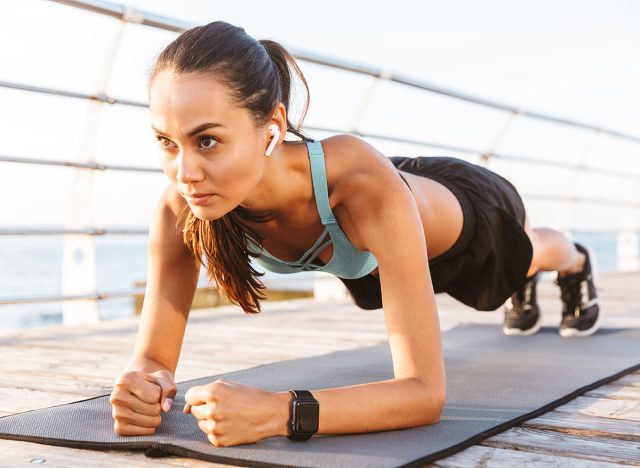
Here's how to do a plank, per Willis.
Start Position: Begin lying face down on the floor. Place your forearms and toes on the ground, with your elbows directly under your shoulders. Keep your body in a straight line from head to heels (neck, head, back, and spine in one straight line).
Engage Core: Lift your body off the ground, keeping your forearms and toes in contact with the floor. Tighten your core muscles, ensuring your hips do not sag or lift too high, continuing to drive your pelvic bone towards your ribcage for engagement.
Hold Position: Maintain a neutral spine with a relaxed neck and keep your body as straight as possible. Hold the position for the desired amount of time.
RELATED: 12-3-30 Walking Method: 20 Proven Tips to Lose Weight Faster
How to Modify a Plank
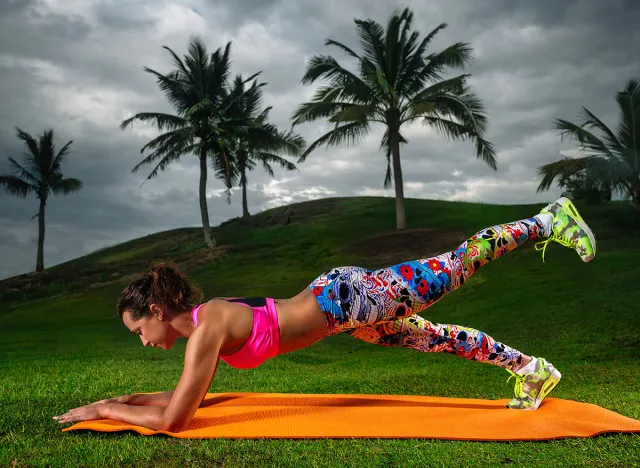
There are various ways to modify a plank if you need help with the traditional form. Here is what Willis suggests
Assisted Plank
Willis recommends an assisted plank. "Lower your knees to the ground while keeping your forearms and toes (or knees) on the floor. This reduces the amount of body weight you're holding up, making it easier to execute," she says.
Incline Plank
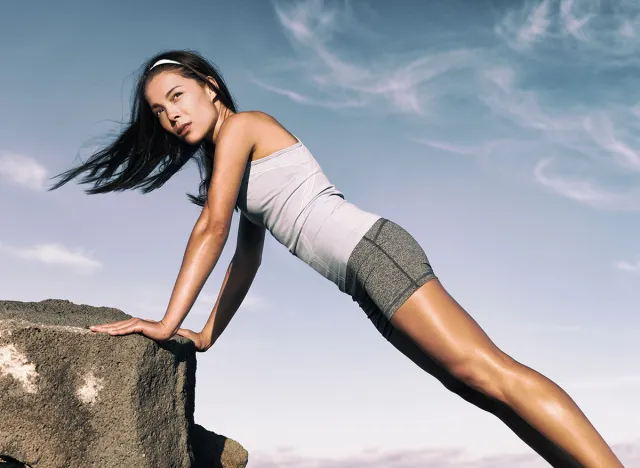
You can also do an incline plank. "Place your hands on an elevated surface, like a bench, table, or even the wall. This decreases the angle and makes the exercise less intense," she says.
Plank on Hands
Instead of forearms, place your hands directly on the ground, with arms fully extended, recommends Willis. "This version is a bit more challenging, but still a good modification."
How to Continue Making It Harder
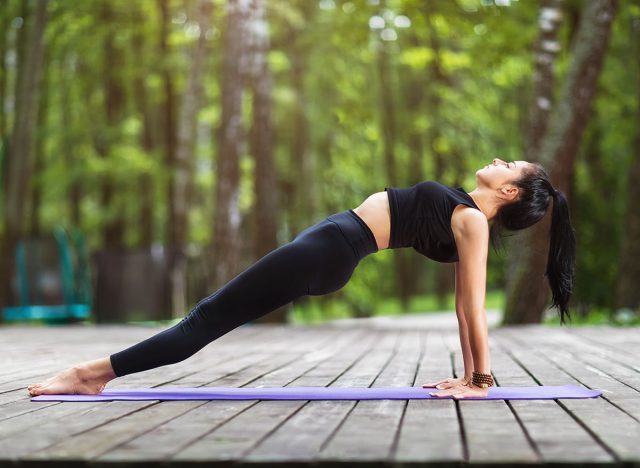
Once you master the plank, you should consider modifying it. "I love these variations with plank progression," says Willis.
RELATED: The Ultimate Guide to Getting Fit as a Pear Body Type
Add Leg Lifts
While holding the plank, lift one leg off the ground and hold for a few seconds before switching to the other leg. "This forces higher core and glute engagement," says Willis.
Add Arm Lifts
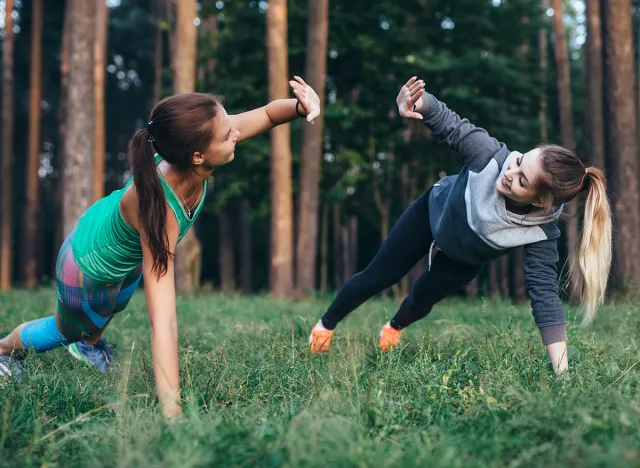
Extend one arm forward, hold for a few seconds, and then switch to the other arm. "This variation increases the demand on your core for stability," she explains.
Plank Swivel or Saw
"Both motions force your core muscles to work harder in maintaining stability, preventing your hips from sagging or swaying excessively. The rotational movement in the swivel requires more coordination and balance, challenging your stabilizing muscles more than a static plank. It also targets the oblique muscles (side abs) more effectively, enhancing overall core strength and muscle definition. The sawing motion requires greater effort from your core to maintain proper form and alignment," says Willis.
Increase Duration

Gradually extend the time you hold the plank, continuing to challenge your endurance. "Adding 10-15 second increments are great markers," she says.
How to Avoid Injury? Maintain Proper Form
There are a few ways to avoid injury. "Keep your body in a straight line from head to heels, ensuring your hips don't sag or rise too high. This alignment helps prevent strain on your back and shoulders," says Willis.
Engage Your Core
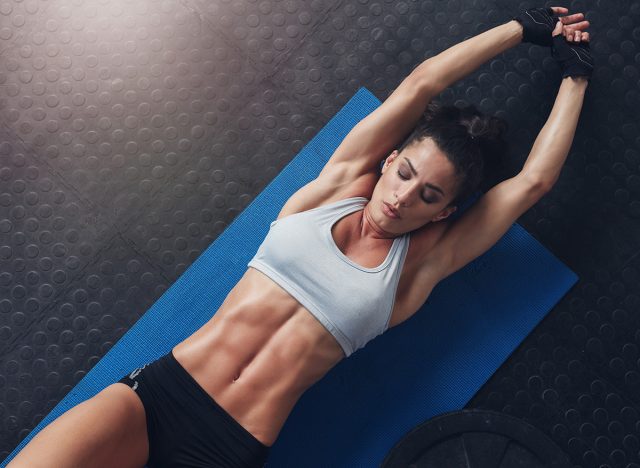
Also, make sure to engage your core. Tighten your core muscles throughout the exercise, supporting your lower back and avoiding unnecessary pressure.
Breathe Steadily
Don't hold your breath! "Keep your breathing steady to reduce tension and maintain balance," Willis recommends.
RELATED: How I Melted 100 Pounds in 18 Months With My 6 Step Weight Loss Secret
Use a Mat
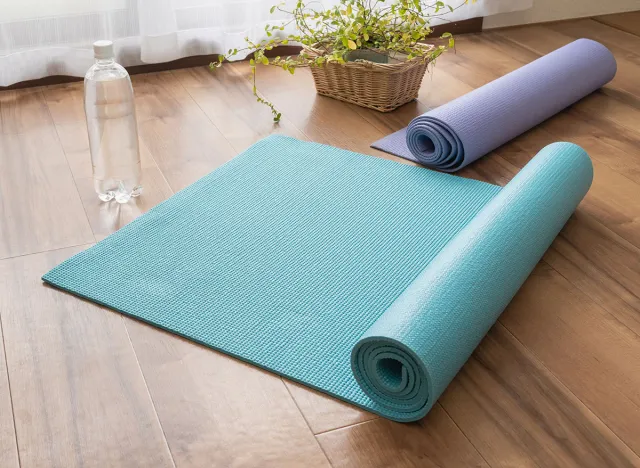
Also, use a mat. "Perform the plank on a padded surface, like a yoga mat, to reduce pressure on your forearms and feet," says Willis.
Listen to Your Body
Lastly, listen to your body. "If you feel pain, especially in your lower back or shoulders, stop and check your form. Start with modified versions and gradually progress," she says. And if you enjoyed this article, take advantage of these 15 Quick Ways to Lose Body Fat Percentage in a Week.





